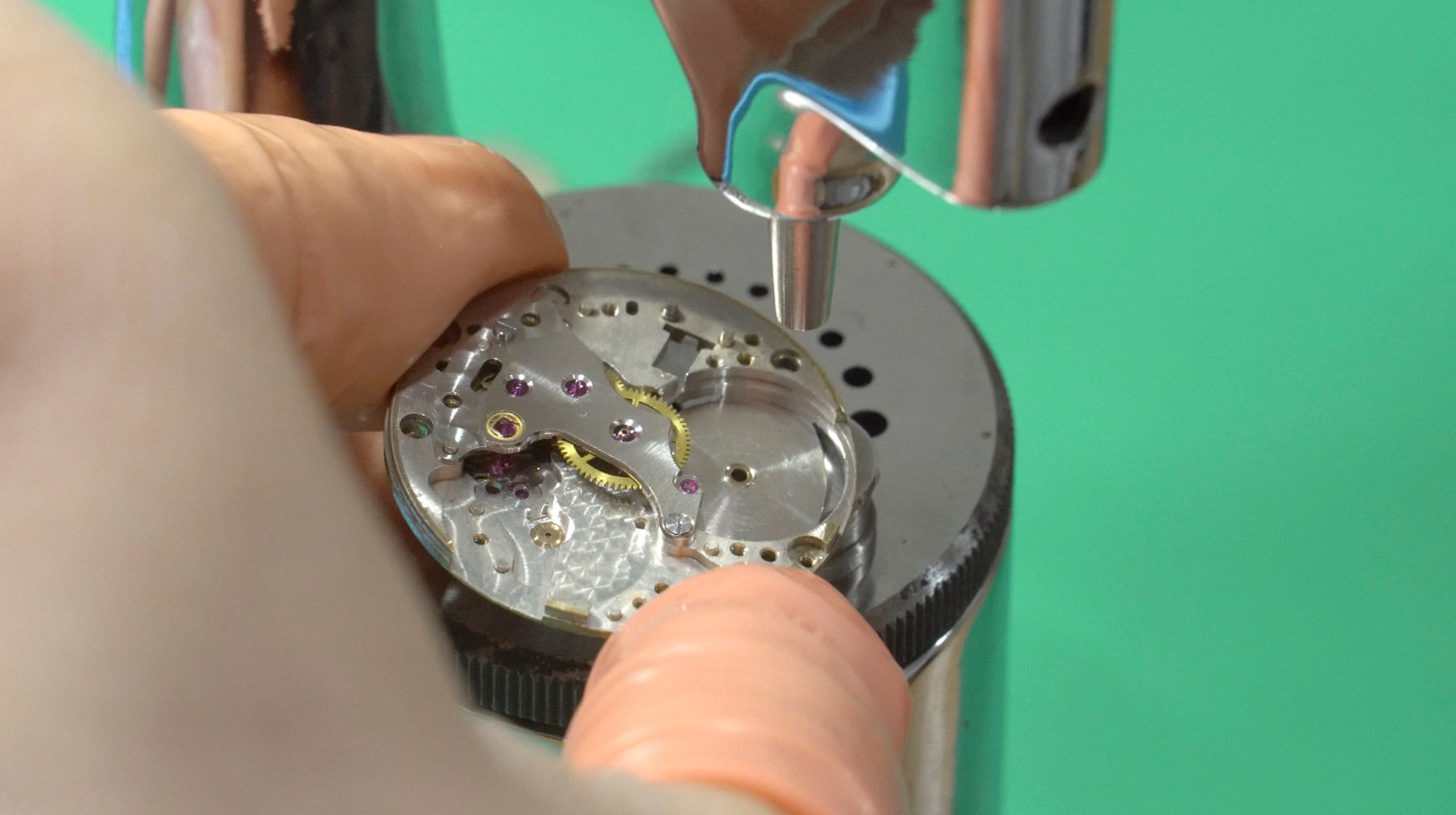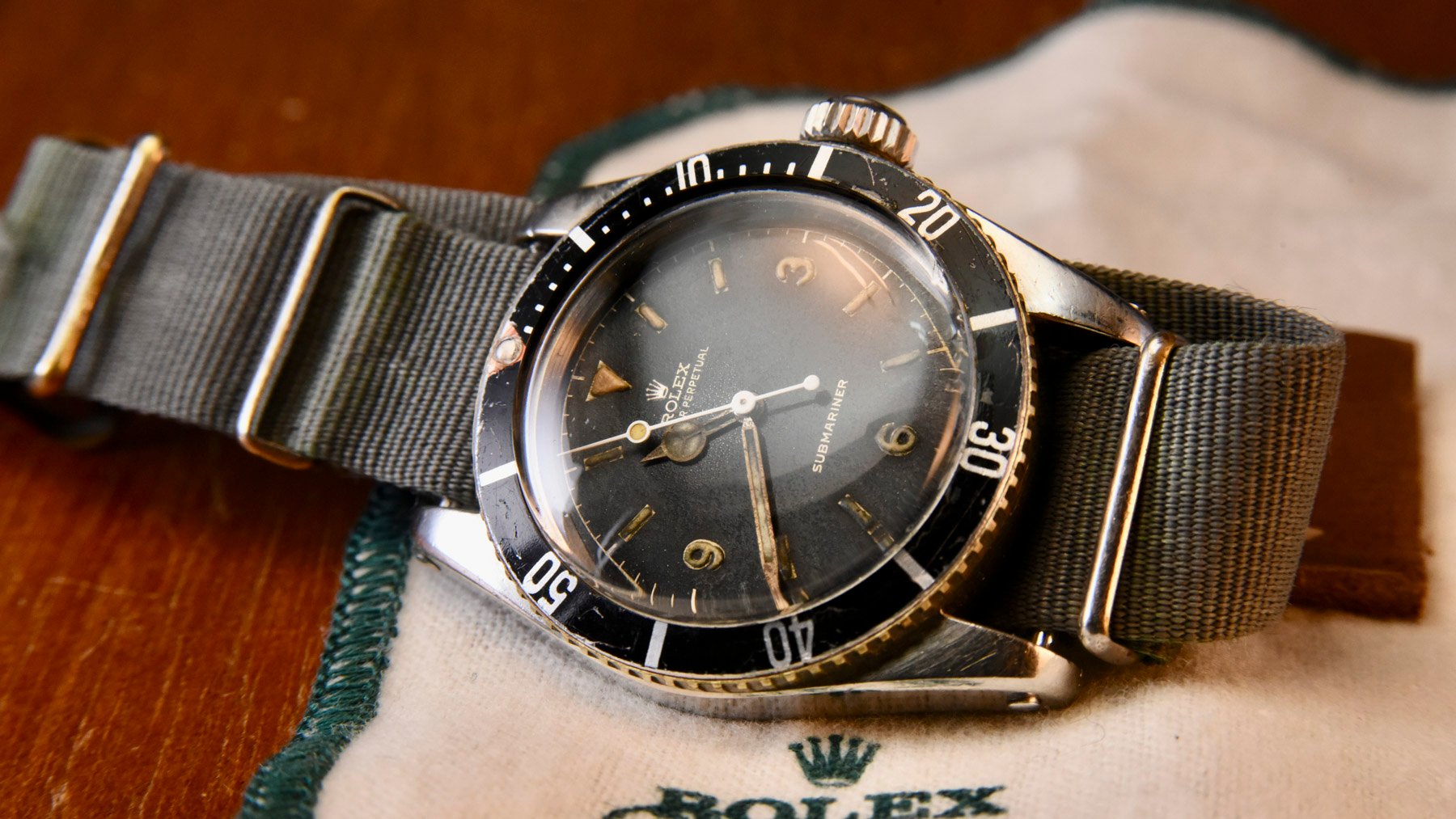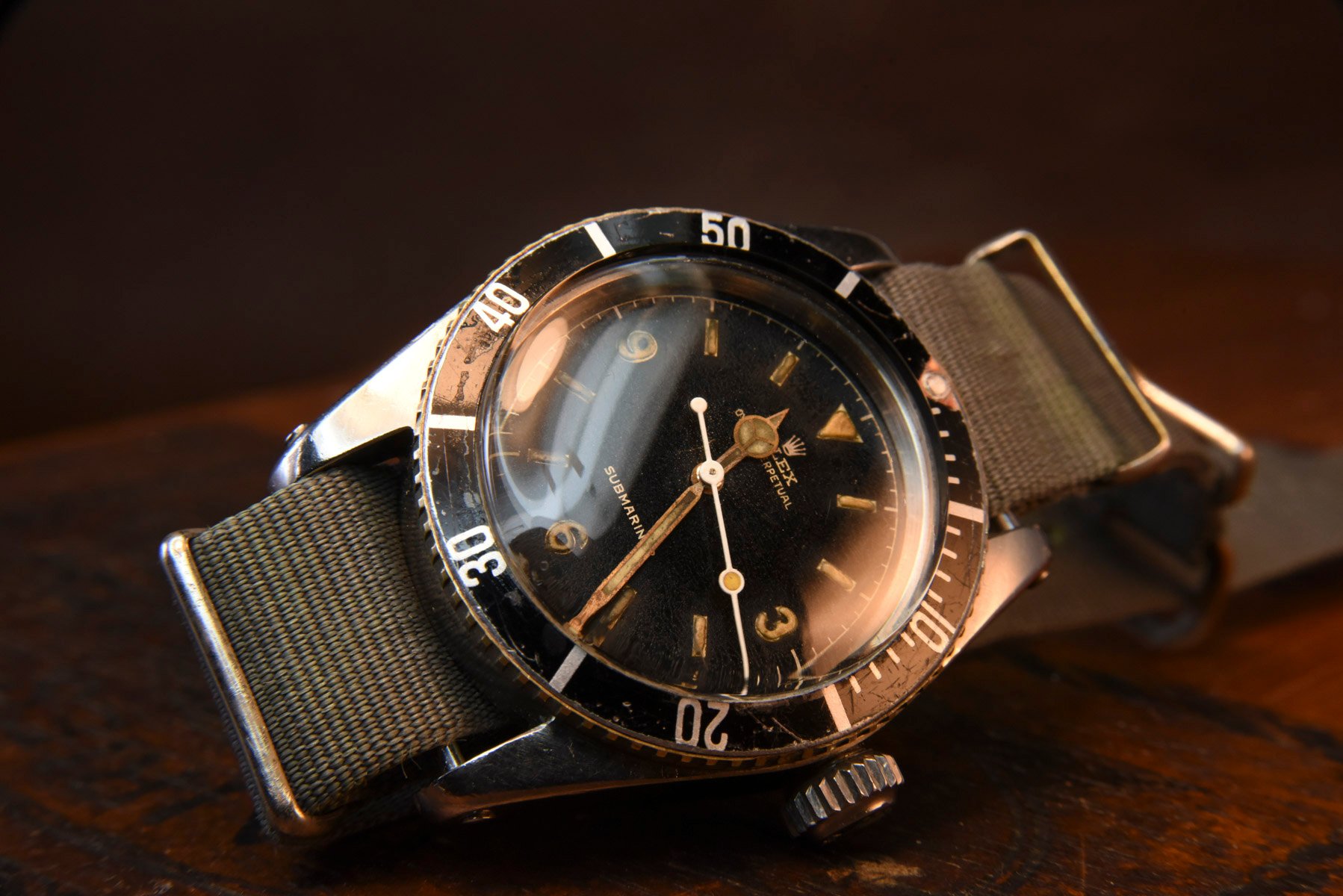Bringing A Rolex Submariner 5510 Australian “MilSub” Back To Life
Greg Petronzi is a passionate watchmaker who runs True Patina, a company that specializes in restoring vintage Rolex and Tudor watches. Recently, he sat down with me to share an ultra-rare Rolex Submariner 5510 that came across his workbench.
Some of the best things about Rolex and Tudor are the stories. It has been a fun journey to research and write about a few myself, from an old Rolex Submariner found on the ocean floor and reunited with its original owner to the small Rolex field watch that served in North Africa in WWII. And how about the Tudor watches that served with the Royal Canadian Navy in the Battle of the Atlantic? Then, just this month I got to write about Harold Holt, one of Australia’s former prime ministers, who was gifted a Rolex Submariner because of his passion for skin diving.
There’s no shortage of interesting stories out there, and I’m lucky to research and write some of them alongside my Fratello colleagues. Today, we can share another. It features a watchmaker, a reverend, and, of course, a Rolex. Read on.
An accomplished watchmaker and psychologist
Greg Petronzi is a humble guy. A successful psychologist by day, he also happens to be an expert in restoring vintage Rolex and Tudor watches. As many of you know, restoring vintage watches takes all kinds of specialist knowledge and patience. It just so happened that Greg, who runs @True_Patina, recently brought an Australian Rolex 5510 back to its former glory. This is an incredibly rare watch. After a bit of digging, I stumbled across some old documents in the archives of one of its owners, a reverend who served in the Royal Australian Air Force (RAAF) in WWII. But first, let’s get to know Greg.
Greg said he got into watches at a very young age. “There are photos of me as a kid of only four years old with a Mickey Mouse watch on. In middle school, it was a Swatch with a transparent plastic case and an automatic movement. The idea that the watch was powered not by a battery but rather my motion was something that thrilled me then, as it continues to at present some 36 years later,” he said.
From passion to profession
That passion led to his venture into watchmaking, which, by his account, was more of a happy mistake than a focused intention. “I took an introductory watchmaking course for fun and found that the experience came naturally to me. After befriending a long-time Rolex watchmaker, I began an informal apprenticeship with him around the conclusion of my Ph.D. in counseling psychology. The more that I worked on watches, the more I loved it,” he said.
Greg found that his skills in psychology paralleled those of watchmaking. “As with being a psychologist, being a good horologist is very much about trust. Friends I amassed over years of watch enthusiasm/collecting began to send me their watches to work on after a few years of working on watches I owned. Things progressed from there, and here we are years later. I’ve developed a niche for the repair and restoration of vintage Rolex because these are the watches that I am most excited by. My passion as a collector informs my approach to watchmaking — when possible, preserve rather than replace,” he said.
A Rolex Submariner in the service of a reverend
Word gets around in the vintage watch community, and a growing number of rare and highly sought-after vintage Rolex and Tudor watches has started to flow across Greg’s workbench. One of the latest is the Rolex Submariner 5510. Here, he tells us about its backstory:
“This 5510, of which only four are known to exist, was produced in 1958 and issued to Royal Australian Navy clearance divers with the internal military designation of 645-66-010-8359. The watch is currently in full-spec A10 condition retaining its original fitted fixed lugs, 3-6-9 dial, and red-triangle insert.”
War records reveal a past owner
Truly, this Submariner 5510 is a bit of a historical gem among Rolex timepieces. Greg provides the background: “It has only three owners from new and is the only known 5510 RAN with full provenance. This 5510 RAN was used from new until 1977 when it was then sold through Tottenham government-surplus auctions to Australian Reverend Jack Flentje,” Greg explained.
“Flentje previously served in the RAAF during WWII and was stationed in Marauke Dutch Guinea as a radar operator from 1942 to 1944. One of his many hobbies and interests was repairing clocks and watches. He was known to keep dozens of watches and parts in spare ammo boxes, fitting for a 5510 RAN. The watch was later purchased by Alan Bloore — known as ‘Hammer’ in horology circles — and held in his collection until this year,” he said.
Reverend Jack Flentje had good taste in watches, it seems. In my research, I also managed to track down his RAAF WWII records. In a wonderful stroke of good luck, these records even have his enlistment photos, which you can see a few paragraphs above.
Why the focus on old Rolex and Tudor?
I asked Greg what it’s like to service older Rolex and Tudor watches and whether they had any quirks. “In certain ways, their build quality is better than many modern pieces, but in other ways, they are very finicky and in need of great, nuanced care,” Greg said (this sounds familiar to many of us who are passionate about vintage watches). “With newer watches, it’s all too easy to find new parts, swap them out, and not need to make many adjustments; not so with vintage. I often say, ‘There’s no simple fix with a vintage watch.’ I have to be prepared for something small to end up requiring much more time and attention than anticipated.”
In fact, Greg explained, servicing older watches takes high levels of patience, which probably rules me out from ever taking up watchmaking. “Vintage calibers require greater levels of patience and diagnostics. For instance, they often require hairspring adjustments, end shake adjustments, and re-bushing of holes in the main plate. Things of this nature are not usually required of newer movements. With Rolex, the build quality across generations is fairly consistent. There’s a beauty to the older caliber 1530s, for instance, that is somewhat lost on the newer calibers. However, newer calibers like the 3135 are engineering marvels that go together reliably well. Rolex manufactures its movements to be serviced, so the screws, bridges, and main plates are generally very robust. This makes servicing Rolex calibers more enjoyable than, say, an older Tudor with an obscure ETA movement,” he said.
A memorable Rolex to work on
One of Greg’s highlights was servicing a Rolex Explorer 1016 from his friend Eric Wind. But even in that illustrious horological company, this Australian Rolex Submariner 5510 stands tall.
“It’s a humbling experience to go into my workshop every day and have watches that occupy that online mythical construct alive and in front of me in three dimensions. I would say that this particular 5510 “MilSub” was one of them. Because of its rarity, history, and provenance as well as the challenges I faced in trying to get it to run well again, it certainly stands out in recent memory. I like watches that tell stories. I like bringing things with history back to life while preserving their originality as much as possible.”
It also turns out that Greg is a big Fratello fan, so I asked him what sort of articles he liked. I was thrilled when Greg said one of his top articles recently was one I’d penned. It was on a Certina DS-2’s descent down Mt. Everest, which you can read here. “I enjoy historical pieces showcasing the tool-watch/user relationship. An article on Fratello not long ago about a man who skied down Mt. Everest with a Certina comes to mind in particular. Super cool. I really enjoy seeing watches worn and used as intended,” he said.
Final thoughts
One of the elephants in the room is the increasingly divisive baggage of the Rolex brand. It is fair to say that gray-market antics and waiting lists have dented the enthusiasm some may have had for the brand’s products. And that is a shame because Rolex makes great watches. Seeing so many valuable watches pass across his workbench, Greg also thinks about this issue.
“I think about the outrageous dollars (Rolex watches) command nowadays, (and it) is the only thing that makes me shy about owning them. While it’s nice to know that putting money into a good example can be a fairly safe investment, that’s not a reason to buy a watch,” he said.
“I like them because of the tool aspect of what they are. I like the design language of form following function and simplicity, the understated robustness. They aren’t loud or flashy. I think that’s what draws many to vintage watches; they’re basically a way to time travel when you look at your wrist. I love that.”
On that, Greg and I can agree. But what do you think, Fratelli? What is it about vintage watches that draws you in? And if you have a special story to share, let me know in the comments. Or if you want to do so privately, contact me on Instagram.















